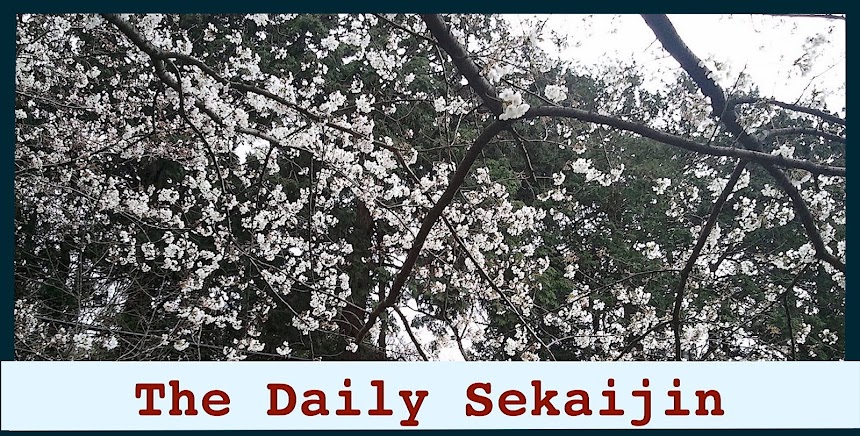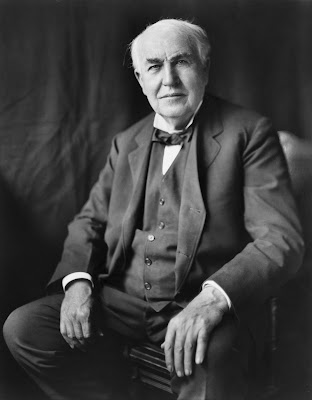Hello!
How are you? Today, I'll tell you about our 2nd writing assignment (作文2). While I usually would give all of you the handout about the assignment first, this time I am posting it here first as a different way to communicate the assignment to you.
You have three (3) choices for topics. Choose one (1) of them:
1. Write about a unique, interesting, or special person you know
In this topic, write about a unique, interesting, or special person you know, like a teacher, best friend, coach, or even a family member like a mother, father, brother or sister - or a famous person you think is unique and inspiring, like a singer, musician, actor, athlete, or a writer or artist.
I will gather your writing on this topic into a book called The Small Book of Big People. I started this a few years ago with my students at another university. You can check out their writing at this link, and also at this link too.
2. Write about a figure in science or technology that you admire
In this topic, choose a figure from science or technology - any major person and any field of science or technology (biology, chemistry, physics, mathematics, engineering, IT - any area of science or technology is okay) that inspired you to study science seriously. It can be a Japanese or foreign person, and anyone from the past or present.
I will also gather any writing on this topic into The Small Book of Big People collection.
3. Write about your favorite place
While we have been doing some writing about people, you can also write about a place - in this case, your favorite place. I would like you to go deep and far with it – in it, you can write about where the place is and why it is special to you, and very importantly, what feelings you have about it. Write deeply about those feelings and even give some history about them - especially about the first time you ever saw the place and what impact it had on you at that time.
If the place is a tourist spot, or has some long history to it (such as an important event in the past that happened there, or an important person who came there), also show why it brings tourists, or the reasons why it is so historical.
I am gathering writing on this topic into a book called Places & Traces - a collection of student writing about unique places.
You can use the place that you wrote about when doing your practice writing about places, and make your writing about it bigger and longer.
How much to write
I would like you to write as much as you can, because your work may be published (出版した) on both this blog and in The Small Book of Big People and Places and Traces books. So write to the best you believe you can!
I would like to see around 3-4 paragraphs. (Make the paragraphs at least a little longer!) But if you can write even a little more - go for it!
Deadline (締め切り)
It will be June 4th (6/4). So starting from today, I want you to work on a first draft (下書き) in your notebooks in pencil in class.
I will remind and show all of you how you can review each others' work. Then you can change things about the draft as you need to, then write to the finish and turn in your final draft on 6/4.
Good luck with this! I hope you can have fun with this, and enjoy writing about a person who is special and unique to you, a scientist you admire, or a place that you have a great feeling for.
How are you? Today, I'll tell you about our 2nd writing assignment (作文2). While I usually would give all of you the handout about the assignment first, this time I am posting it here first as a different way to communicate the assignment to you.
You have three (3) choices for topics. Choose one (1) of them:
1. Write about a unique, interesting, or special person you know
In this topic, write about a unique, interesting, or special person you know, like a teacher, best friend, coach, or even a family member like a mother, father, brother or sister - or a famous person you think is unique and inspiring, like a singer, musician, actor, athlete, or a writer or artist.
I will gather your writing on this topic into a book called The Small Book of Big People. I started this a few years ago with my students at another university. You can check out their writing at this link, and also at this link too.
2. Write about a figure in science or technology that you admire
In this topic, choose a figure from science or technology - any major person and any field of science or technology (biology, chemistry, physics, mathematics, engineering, IT - any area of science or technology is okay) that inspired you to study science seriously. It can be a Japanese or foreign person, and anyone from the past or present.
I will also gather any writing on this topic into The Small Book of Big People collection.
3. Write about your favorite place
While we have been doing some writing about people, you can also write about a place - in this case, your favorite place. I would like you to go deep and far with it – in it, you can write about where the place is and why it is special to you, and very importantly, what feelings you have about it. Write deeply about those feelings and even give some history about them - especially about the first time you ever saw the place and what impact it had on you at that time.
I am gathering writing on this topic into a book called Places & Traces - a collection of student writing about unique places.
You can use the place that you wrote about when doing your practice writing about places, and make your writing about it bigger and longer.
How much to write
I would like you to write as much as you can, because your work may be published (出版した) on both this blog and in The Small Book of Big People and Places and Traces books. So write to the best you believe you can!
I would like to see around 3-4 paragraphs. (Make the paragraphs at least a little longer!) But if you can write even a little more - go for it!
It will be June 4th (6/4). So starting from today, I want you to work on a first draft (下書き) in your notebooks in pencil in class.
I will remind and show all of you how you can review each others' work. Then you can change things about the draft as you need to, then write to the finish and turn in your final draft on 6/4.
Good luck with this! I hope you can have fun with this, and enjoy writing about a person who is special and unique to you, a scientist you admire, or a place that you have a great feeling for.
Images: Top & bottom - personal photographs. All rights reserved/Kikunae Ikeda - by original uploader Dan@mac at German Wikipedia - Transferred from de.wikipedia to Commons by Magnus Manske using CommonsHelper., Public Domain, https://commons.wikimedia.org/w/index.php?curid=8297726




















